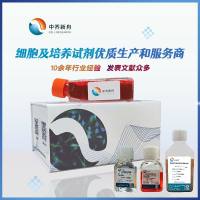HepaRG Cell Culture and Use
互联网
实验设备
Pipet-aid, pipettes and micropipettes
Multichannel pipettes and repeater pipette
Polystyrene round-bottom tubes (40mL) and petri dishes (92 x 17 mm) or similar containers
Incubator at 37°C with a 5%/95% CO2 /O2 atmosphere and 100% relative humidity
Material for cell count (cell counting chamber, coverslips, 0.05% Trypan blue solution)
实验步骤
1) Base Medium consists of 99mL of Williams’ Medium E combined with 1 mL of GlutaMAX™ I
2) Thaw the HepaRG™ Supplement by placing the bottle in a 37°C water bath until completely thawed.
3) Prepare the HepaRG™ working medium by adding the entire contents of the bottle of supplement to 100 mL of Base Medium.
4) The HepaRG™ working medium is now ready for use. It should be stored at 4°C for a maximum of one month.
2. Thawing and counting of cryopreserved, HepaRG™ Cells (Day 0)
a. Pre-warm working HepaRG™ Thaw, Plate, & General Purpose Working Medium in a 37°C water bath.
b. Pipet 9 mL (per HepaRG™ cryovial to be used) of pre-warmed HepaRG™ Thaw, Plate, & General Purpose Working Medium into a sterile 40mL polystyrene round-bottom tube or similar container.
c. Prepare an absorbent paper with 70 % ethyl alcohol.
d. Remove the cryovial from the liquid nitrogen.
e. Under the laminar flow hood, briefly twist the cryovial cap a quarter turn (do not open the cryovial completely) to release internal pressure, and then close it again.
f. Quickly transfer the cryovial to the water bath at 37°C. Do not submerge it completely; be careful not to allow water to penetrate into the cap. While holding the tip of the cryovial, gently agitate the vial for 1 to 2 minutes (small ice crystals should remain when the vial is removed from the water bath).
g. Wipe the outside of the cryovial with the 70% ethyl alcohol absorbent paper, and place the cryovial under the laminar flow hood.
h. Aseptically transfer the “semi”-thawed HepaRG™ cell suspension into the tube containing 9 mL of the pre-warmed HepaRG™ Thaw, Plate, & General Purpose Working Medium (resulting in a 1:10 ratio of cell suspension to total volume).
i. Rinse out the cryovial once with approximately 1 mL of the HepaRG™ Thaw, Plate, & General Purpose Working Medium and return the resulting suspension to the 40 mL tube.
j. Centrifuge the HepaRG™ cell suspension for 2 minutes at 357 g (room temperature).
k. Aspirate the supernatant and resuspend the HepaRG™ cell pellet with 5 mL of HepaRG™ Thaw, Plate, & General Purpose Working Medium
2) Cell viability and counting
a. Pipet 250 μL of a 0.05% Trypan blue solution into one, 1 mL polystyrene round-bottom tube.
b. Homogenize the HepaRG™ cell suspension with gentle manual swirling. Then, take 250 μL of this suspension and add it to the tube containing the Trypan blue solution (1/2 dilution).
c. Gently homogenize the resulting cell suspension by manual swirling. Take an aliquot and introduce it into a cell counting chamber (e.g., hemocytometer or the Countess™ Automated Cell Counter).
d. Perform cell observation and count under the microscope. Living cells exclude the dye while dead cells take it and appear blue. Count the living and dead cells and then calculate cell viability and concentration.
1) At day 0, 4 hours after plating
a. Four hours after plating observe cell morphology under phase-contrast microscope, and when possible, take photomicrographs.
b. Cells can be used for metabolism studies according to your standard protocol with human hepatocytes.
c. Incubate the cells with the test substrates according to your protocol for metabolism studies. Note: Incubation times may need adjustment.
a. One day after thawing, observe cell morphology under phase-contrast microscope, and when possible, take photomicrographs.
b. Change from the HepaRG™ Thaw, Plate, & General Purpose Working Media to the HepaRG™ Maintenance/Metabolism Working Medium.
c. Pre-warm the HepaRG™ Maintenance/Metabolism Working Medium in a sterile container (12 mL/24 well plate, 9.6 mL/96 well plate) at room temperature.
d. Transfer the HepaRG™ Maintenance/Metabolism Working Medium pre-warmed into a 92 x 17 mm Petri dish.
e. Remove the lid from the multi-well plate.
f. Remove the existing medium from the wells.
g. Gently add the pre-warmed HepaRG™ Maintenance/Metabolism Working Medium to the sides of each well with a multichannel pipette (100 μL/well for a 96 multi-well plate and 500 μL/well for a 24 multi-well plate). Do not add the medium directly onto the cells.
vii.Control visually the medium level in the wells.
h. Put the lid back on the multi-well plate and place the plate(s) back in the 37°C incubator.
i. Maintain the HepaRG™ cells in HepaRG™ Maintenance/Metabolism Working Medium and use the cells:









